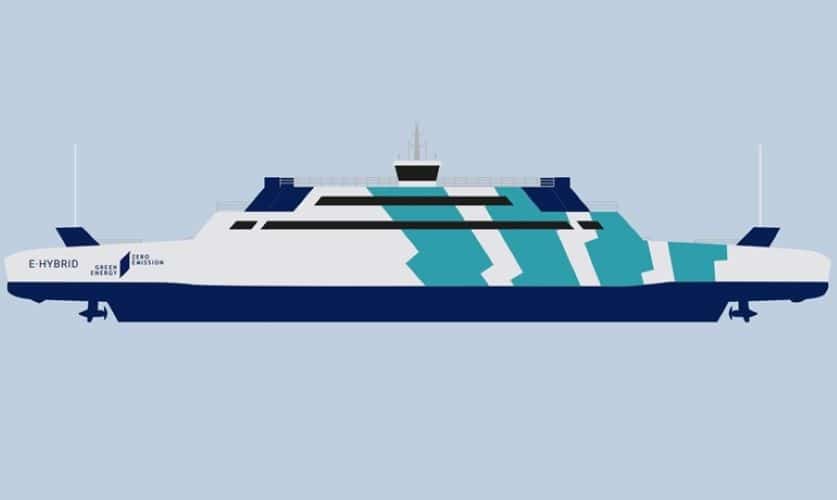FerryEstonian State Fleet announced a call for tender for the design and construction of a new, battery-powered electric ferry to serve the main islands in Estonia. The updated design concept for the new ferry focuses on maximizing energy and cost efficiency, while ensuring passenger comfort.
Estonian Minister of Infrastructure, Vladimir Svet, emphasized the paramount importance of maintaining strong and reliable connections between the Estonian mainland and the islands. “I’m proud to see Estonia leading the way in adopting environmentally sustainable technologies in the maritime sector to achieve this,” Svet added. “The new ferry will be similar in size and capacity to the existing vessels but will be significantly more economical and environmentally sustainable, “ Svet explained.
The new ferry will primarily be powered by “green” electricity, sourced from the shore and stored in the ship’s onboard batteries. In addition, biodiesel-powered auxiliary generators will be available for use during extreme ice conditions or other special circumstances. According to Sander Sääsk, Director of Development Services at the Estonian State Fleet, electricity will remain the vessel’s primary energy source to maximize use efficiency. “The project’s funding criteria require the new ferry to be at least 66% more energy-efficient than the reference vessel, and this standard has been fully integrated into the current tender, “Sääsk emphasized.
Passenger comfort has been a top priority throughout the planning process. The new ferry will boast a modern onboard restaurant, retail shop, lounge areas, and crew cabins. Special care has been taken to ensure full accessibility for passengers with disabilities, including those with mobility and visual impairments. The ferry will accommodate up to 500 passengers and around 130 vehicles. “The proposed size of the vessel allows for quicker loading, which will help operators maintain the current ferry schedules, “Sääsk noted. The overall length of the ferry must fall within the range of 100 to 114 metres, considering the specific characteristics of the Kuivastu and Virtsu harbors. The ferry must also meet ice class 1B as defined by the Finnish-Swedish ice class regulations.
The new ferry is planned to be the main vessel for the Virtsu-Kuivastu route in Estonia but will also be suitable for the Rohuküla-Heltermaa route if necessary. The deadline for submission of tenders for the construction and design of the vessel is 10 December 2024. The ferry is scheduled for completion by February 2027, with operations set to commence later that spring.
The ferry project is financed by the European Modernisation Fund and revenues from CO2 emissions trading.
For further details regarding the tender, please visit the Estonian Procurement Register at https://riigihanked.riik.ee/rhr-web/#/procurement/7891704/general-info

